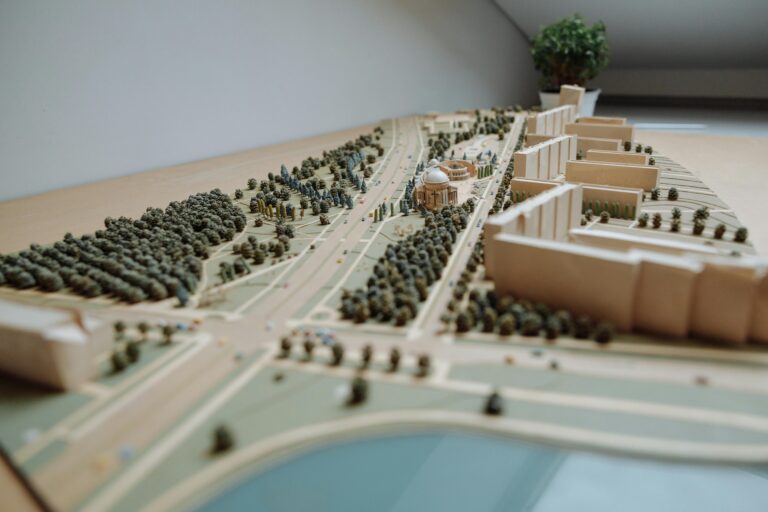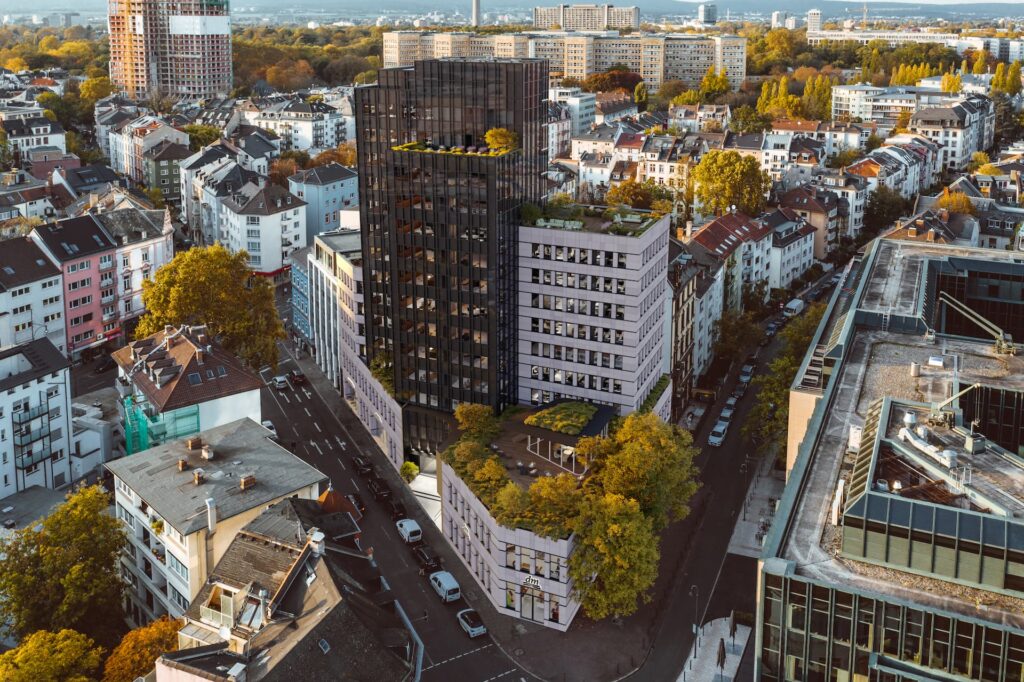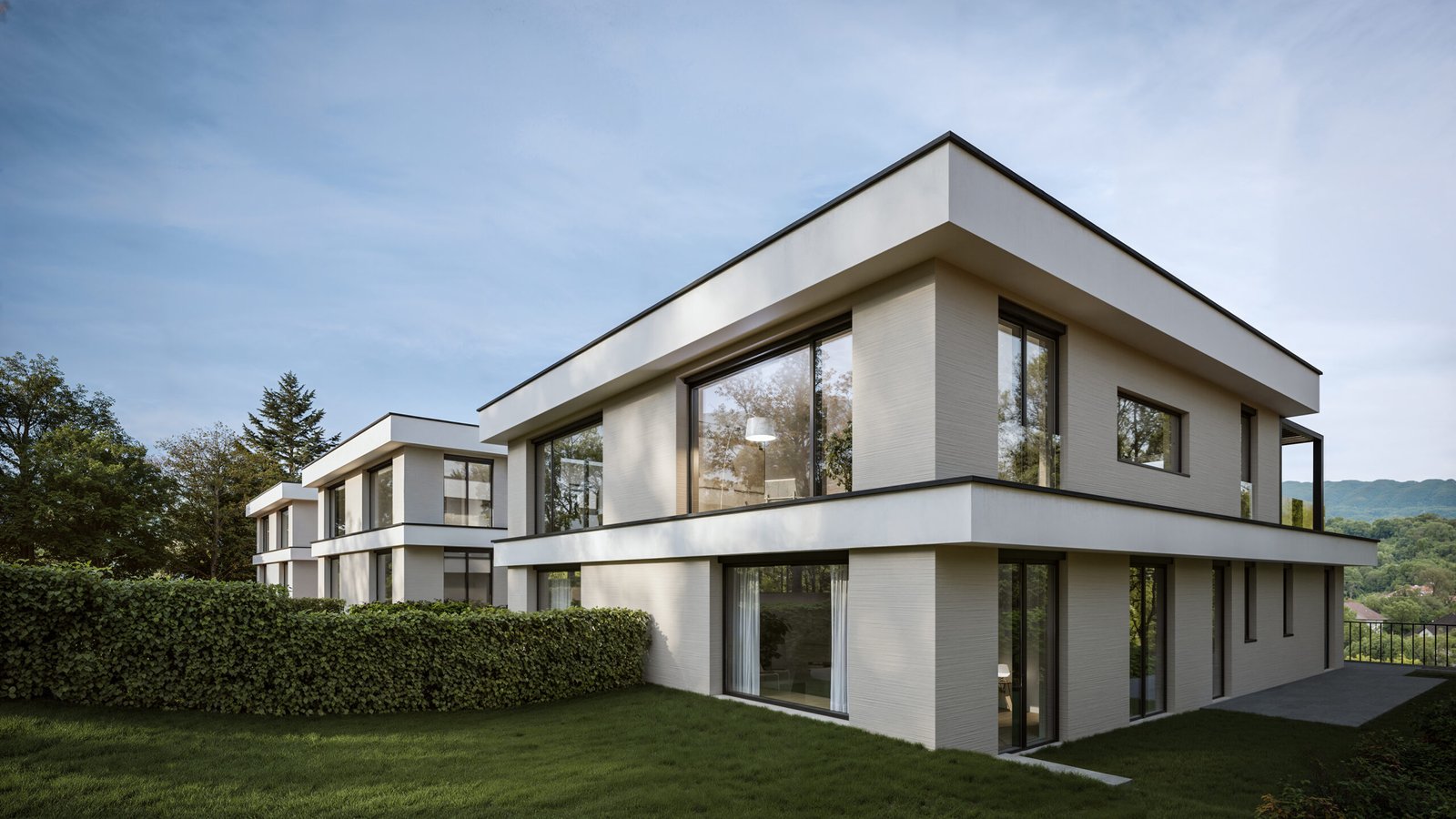These are the days when the field of architecture has become very fast, and the latest digital technology is replacing the traditional methods of designing. In short, you can say that three-dimensional modeling is leading the charge in the field of architecture.
There was a time when architects and builders were solely dependent on two-dimensional blueprints whenever they wanted to observe complicated structures. Now, this is the rule of three-dimensional modeling, and you can create designs of a building that provide all the necessary details and look more natural and realistic.
This shift has not only improved the accuracy of designs but also made the communication between architects, engineers, and clients much better. If you see the project in a virtual space, you can identify the technical issues easily and resolve them early on. It saves much of your time and expenses during the construction.
What is 3D Modeling?
Three-dimensional modeling in construction design is a technique in which you can create detailed, three-dimensional digital representations of buildings with the help of advanced software.
It is a far better and more convenient method as compared to traditional two-dimensional blueprints. You can understand the project in a more accurate and clear way and make changes according to your choice and taste. You have an option of not beginning the construction unless you are satisfied with the design.
Creating a Virtual Building
With the help of three-dimensional modeling, architects can craft a virtual version of the whole building. This model contains the structure of the building, interiors, materials, and even the surrounding landscape.
Tools like AutoCAD, Revit, and SketchUp are used in this technique to make it possible for you to develop models that have a high level of precision. You can see everything that is related to the design, such as the plans of the floor and the textures of the material, etc.
Visualizing Projects from Every Angle
Three-dimensional modeling has the ability to offer a complete view of the project, and it is one of the most prominent advantages of it. Two-dimensional plans are flat and do not give much detail of the design, and you have to rely just on lines.
However, when you are using three-dimensional models, you can see the design from every angle, inside and out. That is the way architects, engineers, and clients understand how the building will look and function in real life.
Enhancing Communication and Collaboration
Three-dimensional models make it easier for architects, engineers, and the teams of construction to collaborate. The model serves as a point of visual reference and helps everyone who is part of the project stay on the same page.
It means you can use this kind of modeling for better communication, make as few errors as possible, and make sure that the project meets the expectations of the client.
Benefits of 3D Modeling in Construction Design
Three-dimensional modeling has completely transformed the way we plan and execute projects related to construction. The benefits of this technique are not limited to just a cool visual but go far beyond this.
It is about improving the quality of graphics you make in terms of accuracy, communication, and efficiency throughout the whole process of creating the designs.
Better Visualization and Accuracy
When you enter the world of three-dimensional modeling, seeing is believing. Here comes its benefit over two-dimensional blueprints, where you can only rely on imagination, how a building will look like.
Three-dimensional modeling has broadened the circle of visualization as the clients, architects, and contractors can actually see the project come to life before it is even built. When you have a visualization with so much detail in front of your eyes, it is obvious that you can easily avoid misunderstandings.
Besides this, whether the person observing the designs is an architect, designer, client, or a common person, everyone will have a clear picture of the final design. This clarity is possible due to three-dimensional modeling.
If you talk about accuracy, three-dimensional models ensure that you will see the minimum number of errors and mistakes in your design. In this way, it saves a considerable amount of money and the need to repeat the design as well.
Better Collaboration and Communication
Three-dimensional models make it easier for everyone on the project to work together. All the persons who are involved, whether they are architects, engineers, or construction teams, can view and interact with the same digital model.
It means that you can communicate with your colleagues and clients in a better way and better understand their suggestions and demands and vice versa. It lets you make changes or adjustments, if required, early in the design. It, as a result, saves a lot of your time and effort during construction.
Early Detection of Design Flaws
One of the biggest advantages of three-dimensional modeling is its ability to detect any flaws in the design before construction begins. By simulating the project digitally, you can also identify the potential issues early on.
This means problems like structural conflicts or layout inefficiencies are resolved before they become expensive fixes during the building phase.
Improving the Efficiency of the Project
Three-dimensional models integrate well with Building Information Modeling (BIM) systems. They can manage the project smoothly without any technical issues. If you integrate three-dimensional modeling with other tools, your project will run smoothly on time.
You would not have to worry about performing the tasks related to your construction and architectural project. This integration will prevent you from any difficulty, and you can do the tracking of materials, scheduling construction phases, and all other such tasks without getting worried and tired.
By using this technique, you can get better results, such as improving productivity and making the overall process of construction more efficient.
The Role of 3D Modeling in the Design Process
Three-dimensional modeling plays a significant role in every stage of the process of creating a design, and it is involved in the project from the initial step of execution of ideas to final construction.
It is not just about creating a digital replica; it is about enhancing the entire workflow and making it easier for you to visualize the design easier, communicate with your colleagues about it, and modify it.
Conceptualizing the Structure of Building
First of all, three-dimensional modeling helps architects and designers bring ideas to life. The designers can create detailed models that accurately represent their vision, and they don’t need to rely completely on sketches or rough drawings.
These models make it easier for you to experiment with different designs, materials, and layouts. It helps you to give fine-tune to your design ideas before any actual work begins.
Presenting to Clients and Stakeholders
When it comes to presenting a design to clients or stakeholders, three-dimensional models provide you with a level of clarity that two-dimensional drawings simply can’t match. Clients can virtually walk through or fly around the structure and see exactly how it will look and function.
These representations are so attractive and engaging that the clients can easily get immersed in them and notice every major, minor, shallow, and deep detail in them. In this way, clients can give better feedback on the designs and approve them with more confidence and satisfaction.
It also reduces the risk of miscommunication or any expectations to be left unmet. The presentation in which each and every point is addressed properly is considered the best one. Three-dimensional modeling does it for you to make your presentation perfect and impress your clients and stakeholders.
Streamlining the Design Process
Three-dimensional models play their role as a dynamic tool that is used for making adjustments and improvements throughout the process of creating designs. Whenever there is a requirement for any change, these models are very useful. Need to change the layout? Want to try out a new material or color?
Three-dimensional models are there to provide you with updates and modifications in real time, and you can easily refine your design and don’t have to take start from scratch. Due to this flexibility, you can streamline your workflow and make changes in your designs in a more efficient way.
Facilitating Collaboration Among Teams
Three-dimensional models are not only useful for designers but also invaluable for engineers, contractors, and other teams involved in the project. Everyone in a project can reference the same model, which makes collaboration more convenient and smooth.
Whether it is about making adjustments to the structure of the building or choosing the material, all teams can work from a shared, up-to-date version of the design. This keeps everyone on the same page, and they can interact and share their opinions with each other. The better the communication, the lower the chances of miscommunication and errors.
If the communication between professionals and clients is not adequate, mistakes and mishandling take place and cause the loss of financial and energy resources. Three-dimensional modeling prevents these costly mistakes by improving the level of communication.
Applications of 3D Modeling in Construction
Three-dimensional modeling is not just a tool used to make designs, but it is a technology that is meant to bring revolution in the world world of real estate industry by executing construction projects in unique ways.
Whether you are working on residential homes or massive commercial developments, this technology has excelled in every field and proven to be an incredibly useful tool across a variety of sectors.
Residential Projects
There is a wide scope of three-dimensional modeling in projects like building houses. With the use of this technology, homeowners can see exactly what their future house will look like before construction starts.
They can visualize the layout, walk through the rooms virtually, and even make changes to details like the placement of furniture or materials used in them. This makes the process of design development more interesting, and the clients personally feel like they are part of it.
The reason for so much immersion is that the look of these designs is completely real and natural. In addition to this, builders can use these models to ensure that everything runs smoothly during construction and fewer surprises along the way.
Commercial Developments
Now, let’s come to the projects that take place on a larger scale, such as the projects at the commercial level. In these projects as well, three-dimensional modeling is essential for developing coordination between architects, engineers, and contractors.
Complex buildings like office towers, shopping centers, or industrial plants have many moving parts, and a three-dimensional model provides a shared, clear vision of how everything should come together. It also plays a role during presentations to stakeholders or investors by offering them a tangible way to see the potential of the project.
Urban Planning and Infrastructure
If you come to a project on a level greater than commercial development, such as urban planning and infrastructure, it also depends upon three-dimensional modeling. There are a number of projects that take place at the public level, like designing a new city park, transportation system, or an entire neighborhood.
These models provide city planners with a vision to see how different elements fit together. Three-dimensional modeling also helps visualize the impact of new buildings on their surrounding environment, like how they will affect the flow of traffic or the skyline.
There is a need for this kind of complete and broader view when you are working with the developments at a large scale.
Sustainable and Green Building Design
Another exciting application of three-dimensional modeling is in sustainable design. Green building projects often rely on three-dimensional models to explore designs that are energy-efficient.
Not only this, but they also require sustainable materials and eco-friendly layouts. Designers can simulate how natural light enters the building or how airflow moves through the space. These insights help architects create buildings that are not only beautiful but also environmentally friendly.
Future Trends in 3D Modeling for Construction
The world of three-dimensional modeling is constantly changing, and the coming time promises even more exciting advancements that will further revolutionize the construction industry. As technology improves, so do the possibilities for architects, engineers, and builders. Let’s see what the new trends are that are shaping the future of three-dimensional modeling.
Virtual Reality (VR) and Augmented Reality (AR)
Just imagine that you are walking through a building that isn’t even built yet. Are you wondering if it is magic? No, it is not magic but a miracle of technology called virtual reality (VR). If you combine three-dimensional models with VR, architects, and clients can get completely lost in a design and feel it as if they were physically there.
There, you will get an unparalleled level of interactivity and understanding. Then, there comes Augmented reality (AR), which adds another layer to this combination. By using this new version of integration, you are able to view three-dimensional models that are overlaid in the real world.
It assists the team of the construction project to visualize how a structure will fit into its actual environment.
Artificial Intelligence and Machine Learning Integration
Artificial intelligence (AI) is making its way into three-dimensional modeling and playing an important role in improving the accuracy and efficiency of design. Machine learning algorithms can analyze the amounts of data at a large scale to improve the quality of everything from structural integrity to energy efficiency.
In the future, AI could even predict the flaws in potential design and tell the ways to improve them. It will make the process of development of designs faster and smarter. This blend of AI with three-dimensional modeling will help architects create more efficient, sustainable, and functional designs.
3D Printing in Construction
The technology of three-dimensional printing is becoming a major element in the field of construction, and you cannot even deny its connection with three-dimensional modeling. Architects can now take their digital models and turn them into physical structures by using three-dimensional printers.
This trend is already being applied to building houses, bridges, and even entire neighborhoods, and it promises to reduce the time spent on construction and the waste caused by the project. As three-dimensional printing continues to advance, you can expect it to play a larger role in bringing three-dimensional models directly into the real world.
Increased Focus on Sustainability
As the demand for sustainable and eco-friendly buildings is increasing day by day, three-dimensional modeling is becoming more and more important in meeting those needs. As you see the upcoming trends, there is a growing need to analyze energy resources and their impacts on the surrounding environment.
These trends of keeping sustainability in view while working on a project will be a direct part of three-dimensional models in the near future. Architects will be able to test and visualize how their designs perform in terms of the consumption of energy, carbon footprint, and the eco-friendliness of material.
It will make it easier to create buildings that are good for both people and the atmosphere of Earth.
Final Words
Three-dimensional modeling is not just a fancy tool but much more than that. It is shaping the future of architecture and construction and making projects smarter, more efficient, and better than ever before.
It improves the whole process of making designs by making it faster, clearer, interactive, and collaborative.
In every corner of the construction industry, three-dimensional modeling is being used to make the accuracy of designs better. It improves communication and gives a streamlined flow to the process of building.
The future of three-dimensional modeling in the industry of architecture and construction is very bright. The latest trends that are being added to this technique are Virtual Reality (VR), AI, 3D printing, and designs where sustainability is the priority.
FAQs
Q. How is 3D modeling used in architecture?
Three-dimensional modeling makes the development of design smooth and flawless. Architects can find out multiple ideas related to designs very quickly and refine them very easily.
Q. What is 3D building modeling?
Three-dimensional modeling in construction design is a technique in which you can create detailed, three-dimensional digital representations of buildings with the help of advanced software.
Q. What are the benefits of 3D modeling in design?
The main advantages of three-dimensional modeling are better quality of design and visualization, increased precision and accuracy, saving of time, and less cost of errors. It also improves collaboration and communication with clients. The best thing is that you can see your future house or building before the construction even begins.





